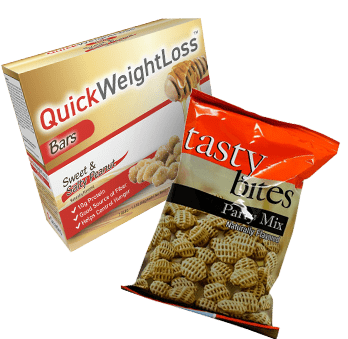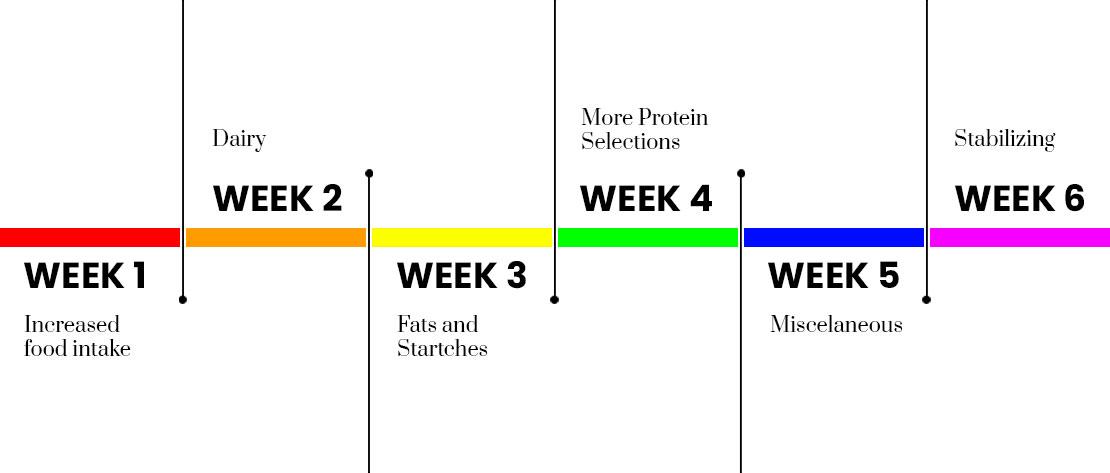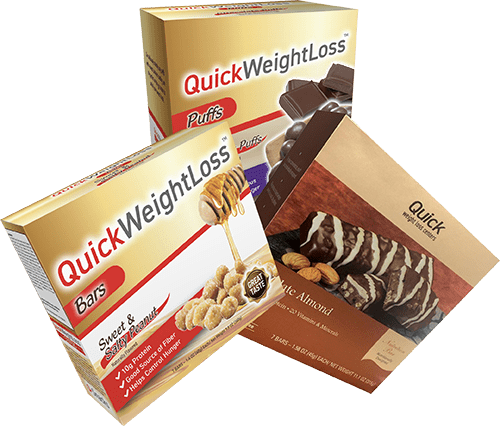Achieve Your Goals
Guidelines for Stabilization
The second phase and the most crucial part of our program is called Stabilization. Once our clients have reached their desired weight, their bodies must stabilize at this new weight. This is done by gradually increasing their caloric intake to the number of calories at which they can maintain their new lean weight.
If you have not experienced the program before, it is highly recommended that you work with a virtual counselor. Your chances of achieving weight loss success will improve.
The Vital Role of Stabilization in Weight Control
Stabilization is the most vital aspect of the program concerning permanent weight control. Losing weight requires time and effort, and your achievements should be a source of pride. However, sustaining weight loss demands knowledge and motivation to employ new skills. Throughout Stabilization, our virtual clients receive ongoing guidance and encouragement as they gain more insight into the nutritional, behavioral, psychological, and physiological aspects of weight control.
Stabilization is most effective when you initiate this phase of the program at a weight that you will find satisfactory for life. If you are dissatisfied with your progress by the end of the weight loss period and have not been utilizing a counselor, reaching out to a counselor is advisable. This is the most valuable investment you can make in securing a permanently slim future.
Navigating Post-Weight Loss Challenges
Mastering Weight Stability
If a client has not reached their goal weight upon completing the weight loss phase of the program due to:
- Having a series of deviations
- Being a slow loser
- Experiencing an interruption in their nutritional plan, or
- Not adhering to the prescribed product usage
Achieving stability in weight becomes much more challenging until excess fat has been eliminated from the body.


Strategies for Stabilization Success with a Virtual Counselor
When working with a virtual counselor, it is helpful for you to have a complete list of foods you intend to include in your permanent diet. This list can be reviewed for nutrient content and portion sizes and used during the stabilization period. This provides a sense of direction for the upcoming six weeks and discourages cheating with extra foods, knowing that the upcoming week will permit that particular food item. The key point is to avoid deviations during stabilization; otherwise, differentiating between weight gain due to a deviation or a problematic food becomes challenging.
Guidelines for Effective Dietary Monitoring
It is essential to maintain a detailed diary during this time to carefully assess the gradual increase in food intake and the stabilization of body weight. In the second week, you can start incorporating a few foods that are not in the nutritional plans. You are encouraged to utilize a comprehensive calorie and carbohydrate counter. Books, websites, and phone apps are available to help track daily calorie and carbohydrate intake. You should continue weighing and measuring foods reintroduced into your program. This practice makes it easier to assess your actual food needs and aids in learning the calorie content and appropriate portion sizes of foods for normal maintenance intake, thereby establishing the habit of “eating like a thin person.”


The Benefits of Continuing with Herbal Supplements
Charting during this stage proves highly beneficial. Ensure to document any issues or pertinent information.
While stabilizing, we encourage the continued use of Q-Snacks. Many of our clients favor protein bars or pudding as alternatives to high-fat and carbohydrate-rich snacks.
Based on past experiences, numerous clients choose to persist with herbal supplements for the increased energy and improved appetite control they provide. We strongly recommend that clients also continue taking Q-Fats and Q-Vits for optimal results.

Track your progress
Food Journals
During Stabilization, it is particularly valuable to weigh, measure, and record all consumed calories. This practice helps maintain awareness of food choices and portion sizes, allowing clients to learn about nutrient content in common foods. Equally important, self-monitoring supports the development of self-control skills as menus expand. Keeping accurate food journals enables an assessment of the relationship between food intake and weight. Clients’ efforts should be consistently acknowledged when intake is meticulously measured and documented.

Weight Fluctuations
Fluctuations of one to three pounds are common during stabilization and are not significant, provided you are following the given instructions and overall progress remains stable.
However, if weight consistently trends upward, take time to evaluate your current eating patterns and meal preparation habits. Identify moments and locations where extra calories are being consumed. Paying attention to weighing and measuring foods, as well as seasonings and calorie-containing beverages, is highly beneficial in such cases. Additionally, assess habits related to how and when food or beverages are consumed. The insights from the personal control guides are just as valuable now as they were during the weight loss phase.
Temporary fluid retention after weight reduction is not uncommon, especially if there’s a significant increase in salt-containing foods and carbohydrates. To prevent this, note that salt consumption is recommended at 1/4 teaspoon from weeks 2 through 6, and carbohydrate intake should be gradually increased week by week.

Temporary fluid retention after weight reduction is not uncommon, especially if there’s a significant increase in salt-containing foods and carbohydrates. To prevent this, note that salt consumption is recommended at 1/4 teaspoon from weeks 2 through 6, and carbohydrate intake should be gradually increased week by week. If the client has consumed excessive salt and carbohydrates at some point and experiences a sudden weight gain, understand that this is a transient situation. The best course of action is to reduce added salt and meticulously measure all foods, adhering to the menu plan for the current week. (Omitting added salt is also acceptable unless otherwise advised by a physician, as sufficient sodium is present in daily food intake.)
Remember that portion control plays a crucial role, and you are encouraged to practice your newly acquired eating habits. Avoid taking breaks or water flushes during both the Stabilization and Maintenance phases.
If weight gain remains within 5 pounds, revert to Stabilization 2, progress through Stabilization 3-6, and then proceed to the Maintenance phase.
Upcoming Week’s Timeline


Enhance Your Weight Loss Journey
Satisfy Cravings, Boost Metabolism
Discover snacks that satisfy cravings and support your metabolism goals. Explore our snacks category to find nourishing options that enhance your healthy lifestyle. Click ‘Buy Now’ to start your flavorful journey.
